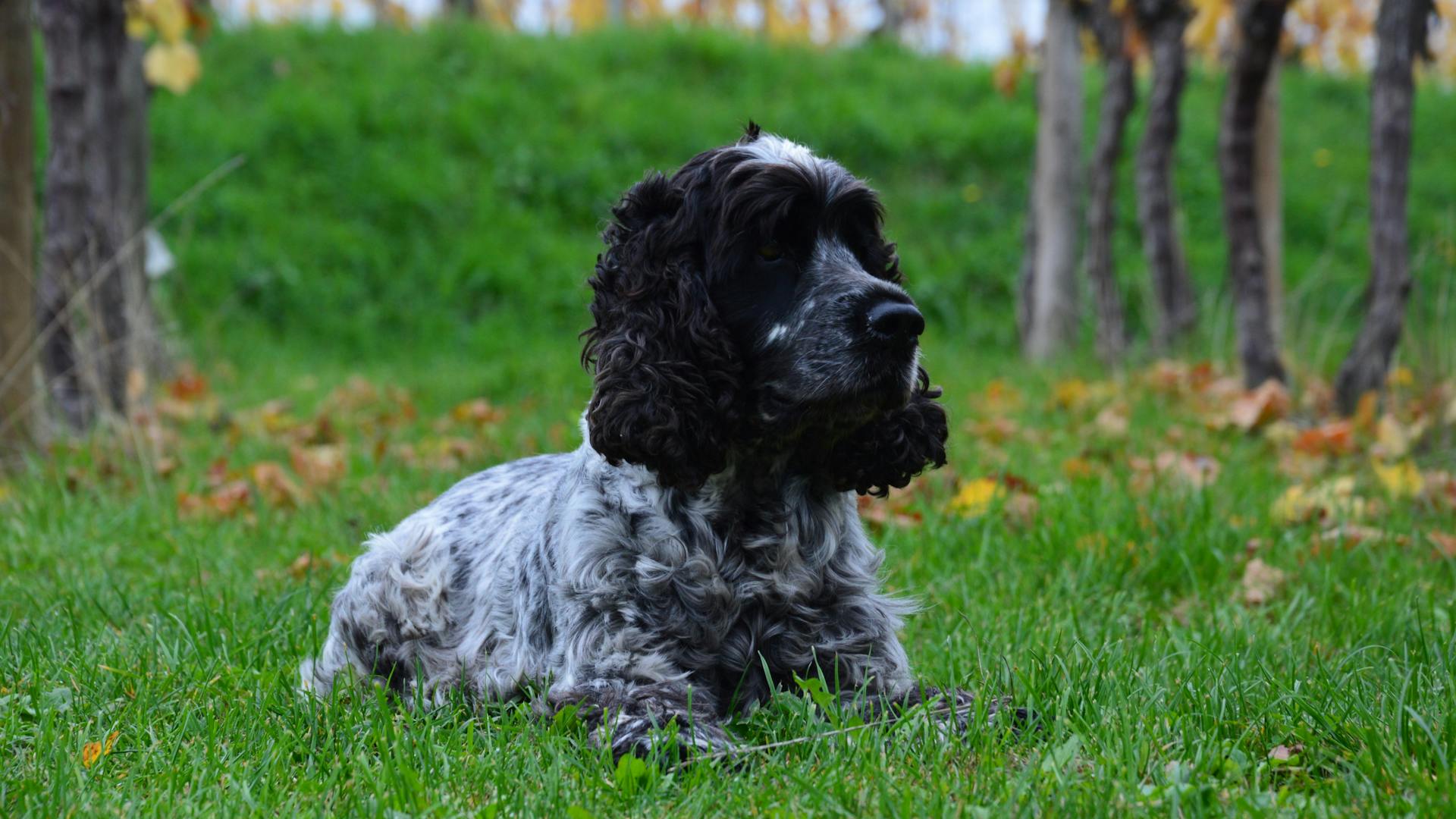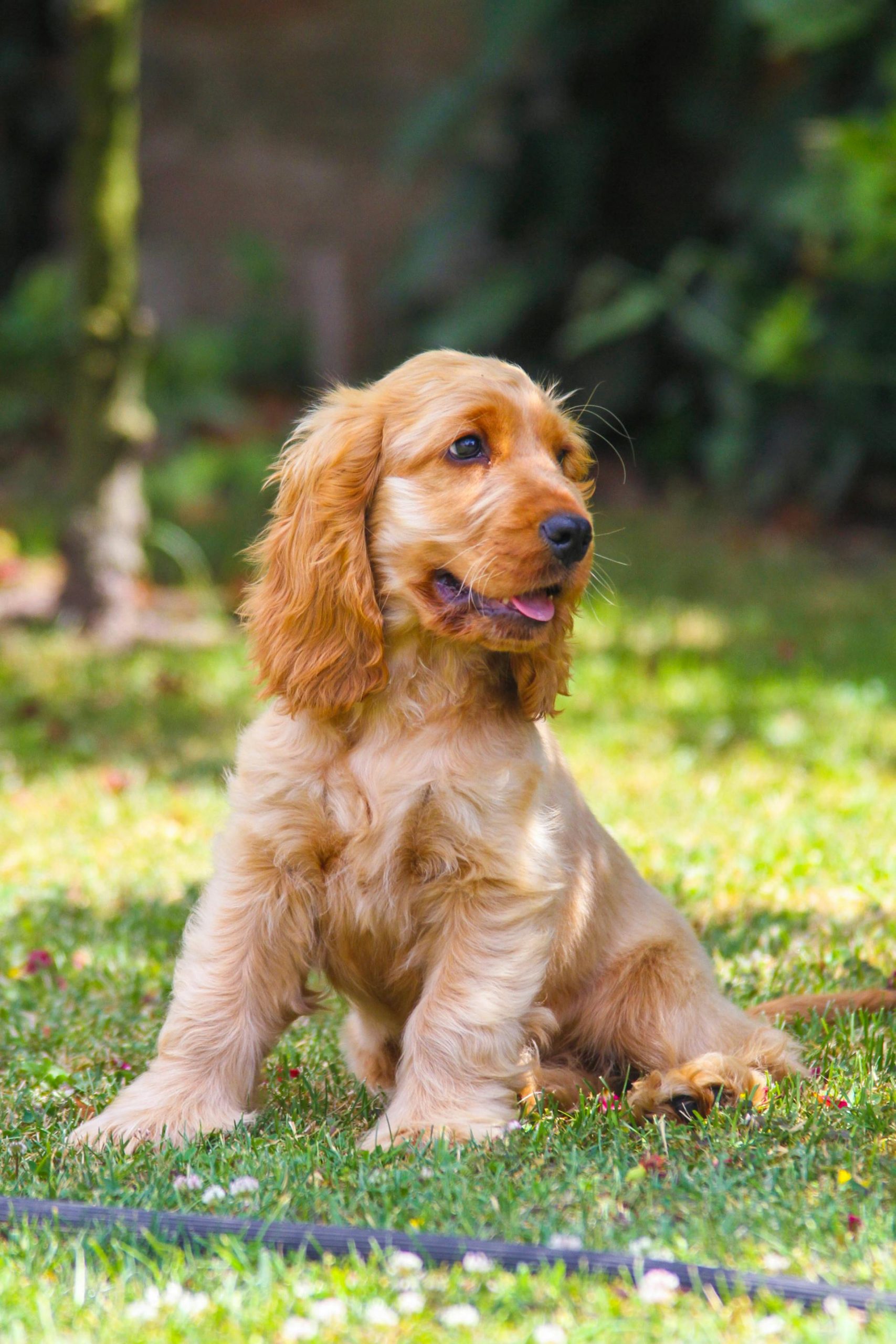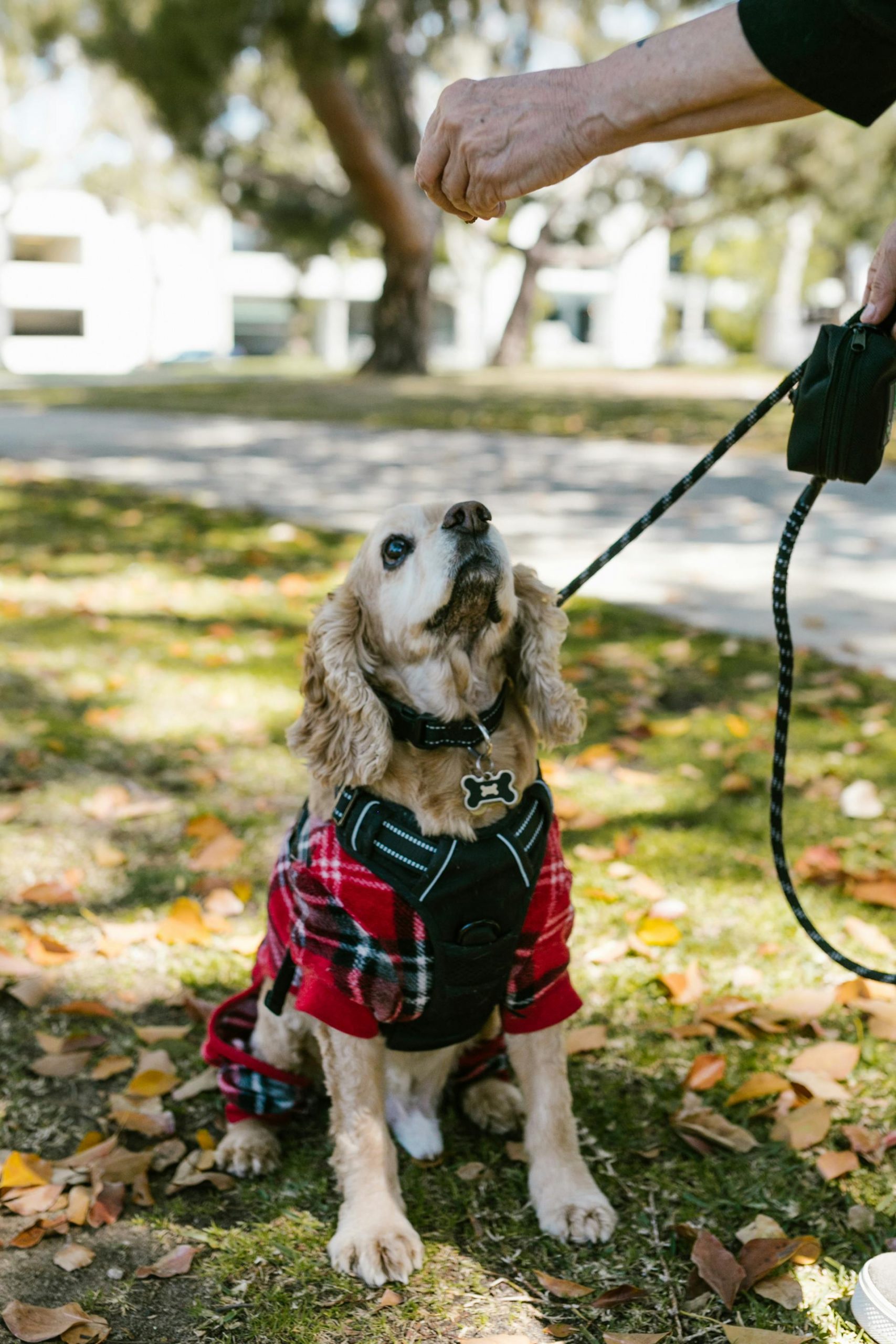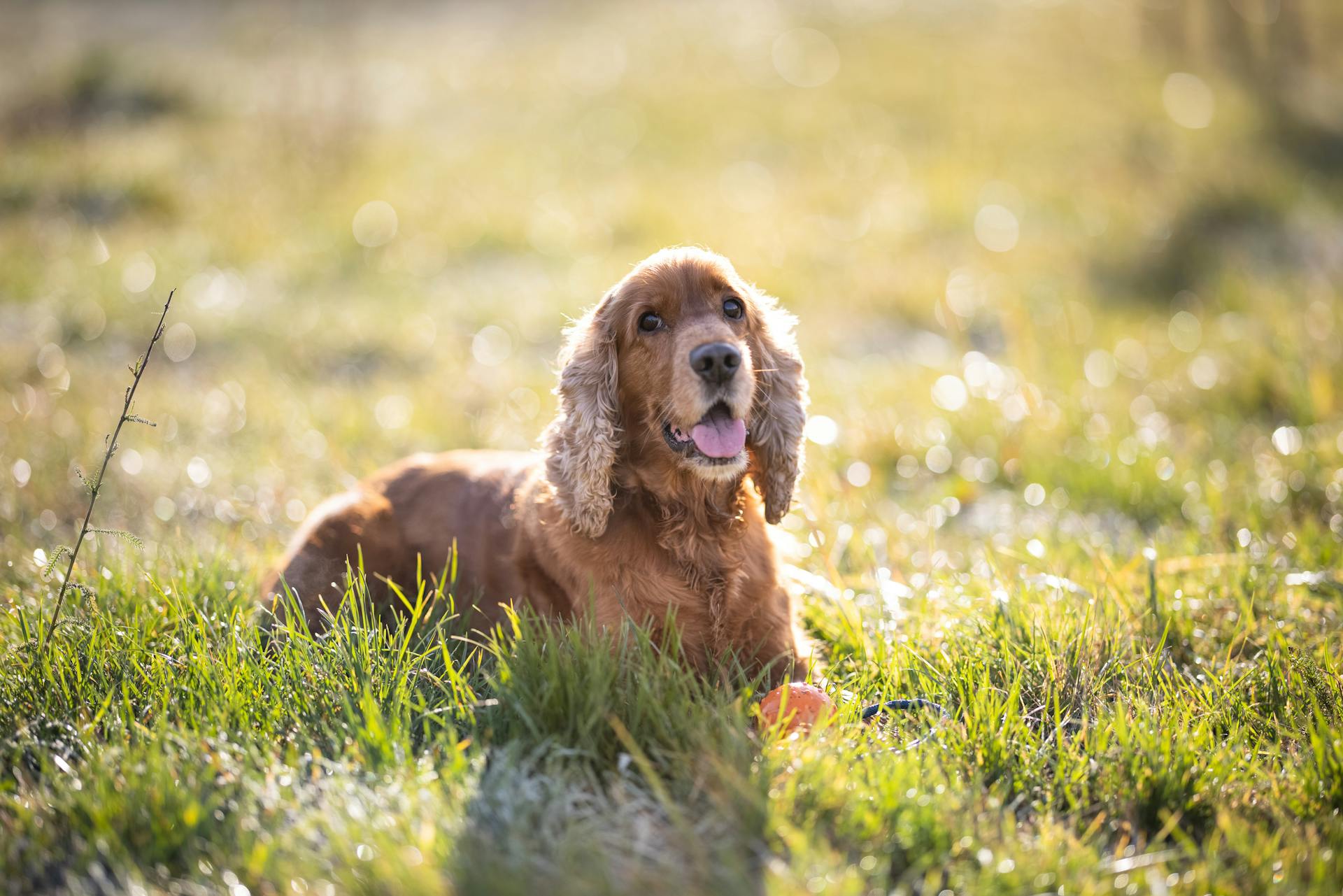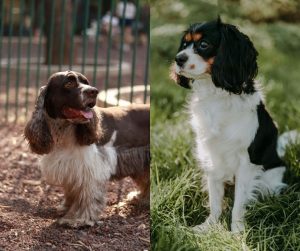Choosing between a male vs female Cocker Spaniel dog breed can be a delightful yet challenging decision for potential dog owners. Male and female Cocker Spaniels present their own unique set of traits and characteristics that may influence your decision.
While they both share the renowned affectionate nature and adorable appearance characteristic of the breed, understanding the subtle differences can help align your choice with your lifestyle and preferences.
From size differences to behavioral tendencies, each gender offers distinct aspects that are worth consideration.
It’s important to acknowledge that male Cocker Spaniels tend to be slightly larger and more muscular than their female counterparts.
On the other hand, females experience heat cycles and may exhibit changes in behavior during these times.
When it comes to their disposition, males are generally sociable and may display more territorial behaviors, while females can be just as playful but might become more reserved as they mature.
These differences not only impact how they interact with other pets and family members but also influence how they need to be cared for in terms of health, grooming, and training.
Key Takeaways
- Both male and female Cocker Spaniels have endearing qualities, with differences that fit various lifestyles
- Recognizing physical and behavioral traits is crucial in choosing the right Cocker Spaniel for your home
- Male and female Cocker Spaniels require specific care and understanding to thrive in their environment
Breed Overview

When people consider bringing a Cocker Spaniel into their family, they often think about the dog’s silky coat and endearing eyes. But there’s more to this breed than its good looks. The Cocker Spaniel is as friendly and lively as it is graceful. Understanding the characteristic traits and the expected lifespan of this breed provides valuable insight for future owners.
Nowadays, we have to remember that some people make a difference between an American Cocker Spaniel and English Cocker Spaniel dog breed. And on top of that, we have a male Cocker Spaniel vs female Cocker Spaniel puppy. Keep that in the back of your mind when thinking about temperament and appearance traits of Cocker Spaniel dogs.
It is worth noting that the American Kennel Club recognized the American Cocker Spaniel first. It took it a while to recognize the English Cocker Spaniel as a separate breed. The United Kennel Club, as well, recognized the English version first, and then the American latter. The differences in breeding are evident by the physical appearance of the dog breeds.
Characteristic Traits
Cocker Spaniels are known for their even tempers and gentle dispositions, making them dependable family companions. Here’s a snapshot of their typical traits:
- Size: Males are generally larger, standing at 15 to 17 inches tall. Females tend to be slightly smaller, ranging from 14 to 16 inches
- Weight: They weigh anywhere from 20 to 30 pounds, with males usually being at the higher end of the scale
- Personality: They often display a cheerful and affectionate nature. Males can be more sociable and outgoing whereas females might show more independence
- Behavior: Both males and females are playful, but males may exhibit more dominance and are prone to be more active throughout the year in terms of breeding behavior
- Coat: Their luxurious coat can come in various colors and patterns, and does require regular grooming to stay beautiful and tangle-free
Expected Lifespan
A well-cared-for Cocker Spaniel can enrich your life for a considerable time. They have a lifespan typically ranging from:
- 12 to 15 years
It’s essential to provide them with regular exercise, a nutritious diet, and clean living conditions to help them live a full and healthy life. Regular veterinary check-ups play a crucial role in catching and managing any health issues early on, which can have a positive impact on their overall longevity.
Physical Differences

When it comes to male and female Cocker Spaniels, they share their adorable expressions and endearing personalities, but they’re not quite the same in shape and shading. Let’s explore the nuances that set them apart in their physical form, shall we?
Size and Build
Male Cocker Spaniels generally boast a slightly more robust build compared to their female friends. They often have a bit more height, stretching up to an inch or two taller at the withers, which is the shoulder area.
When you scoop them up, males might also weigh a tad more, tipping the scales at an extra 3-5 pounds. It’s like picking up a slightly chunkier bundle of love.
- Male Height: Approximately 15-17 inches
- Male Weight: Around 25-32 pounds
- Female Height: About 14-16 inches
- Female Weight: Typically 20-27 pounds
Coat and Colors
A Cocker Spaniel’s coat is their furry hallmark, luscious and long enough for those classic Cocker Spaniel waves to form.
As for color, both males and females can sport a dazzling array of shades, from solids to partis. It’s not the hues that set them apart—it’s the texture and quality.
Somehow, females often have a sleeker, more silky coat, while males carry a denser one. And their ears? She often has her’s set just a smidge higher on that sweet head of hers, adding a touch of feminine grace.
When people think of Cocker Spaniels, they also sometimes mistake them with the Cavalier King Charles Spaniel. That is their close cousin and relative, but a separate breed.
Health and Care
Cocker Spaniels are known for their cheerful disposition and flowing coats, but caring for these adorable dogs goes beyond their good looks. They require a dedicated approach to their health and maintenance to ensure they lead a happy and healthy life.

Common Health Concerns
Cocker Spaniels are generally healthy, but like all breeds, they may face certain health issues.
Owners should watch out for ear infections, as their long ears can trap moisture and lead to infections. Regular checks are necessary to catch signs of trouble early.
They might also be prone to phosphofructokinase deficiency, an inherited condition that affects energy production in their cells, so awareness and proper veterinary tests are essential.
Both male and female Cockers should be monitored for canine liver disease and cardiomyopathy, which can be managed with proper veterinary care.
Females may be at risk of developing mammary tumors, so regular health screenings are recommended. Being vigilant about their eye health is also crucial, as they can develop problems like cataracts or glaucoma.
Because of their amazing health, Cocker Spaniels are also part of cross-breeding programs. Some people mix them with other dog breeds to get a healthier dog. Other breeders, for example, mix them Poodles to try and get a hypoallergenic dog breed.
Exercise and Diet
Cocker Spaniels are an energetic breed that require regular exercise to maintain their health and prevent obesity.
A balanced routine should include daily walks, play sessions, and mental stimulation.
As for their diet, they do well on high-quality food that’s appropriate for their stage of life, size, and activity level. Be mindful of their calorie intake to maintain a healthy weight, as Cockers love to eat and can easily become overweight.
Grooming Needs
Their luxurious coat demands regular grooming to prevent mats and tangles.
Brushing a few times a week and professional grooming every 2-3 months will keep their coat in top condition.
Pay extra attention to their ears when grooming, as they are prone to infection and require regular cleaning and check-ups.
Behavioral Traits

When choosing between a male and female Cocker Spaniel, their distinct behavioral traits are a crucial factor to consider. These dogs are known for their playful and affectionate nature, but subtle differences can be seen in their temperament and ease of training which shapes their interactions with their human companions and other animals.
Temperament and Personality
Both male and female Cocker Spaniels are known for their friendly and affectionate demeanor, often displaying a happy and eager-to-please personality.
However, males can be slightly more dominant and prone to marking their territory. They typically exhibit a cheerful disposition and a greater willingness to engage with strangers and other dogs, though this can sometimes lead to assertiveness or minor scuffles.
- Males:
- More sociable with other dogs and people
- Possible dominance issues leading to more frequent, albeit brief, conflicts
- Tend to be clingier and seek more attention
- Females:
- Mature faster and have more stable mood swings
- Less playful but can be more protective of their family
- They may be more independent and occasionally stubborn
Training and Socialization
Regarding training and socialization, it’s noted that Cocker Spaniels, regardless of gender, are intelligent which often translates into good trainability.
However, differences in their focus and trainability factors can be observed.
- Males:
- Can be more distracted during training sessions
- More likely to engage in play and can be harder to keep focused
- With patience and consistency, they respond well to training
- Females:
- Often more focused during training
- May be easier to train due to their quick maturity
- Their independence might require an assertive but gentle training approach
In both cases, early socialization is key. They thrive in an environment where positive interactions with diverse people and animals are encouraged from a young age. This helps to reinforce their natural predisposition for being affectionate hunters, who are both watchful and obedient.
Gender-Specific Considerations

When choosing between a male or female Cocker Spaniel, it’s important to consider the unique aspects of each gender. From distinct temperament traits to reproductive health, these factors play a significant role in the upbringing and care of your pet.
Male vs Female Temperament
Male Cocker Spaniels generally display a more sociable and energetic disposition. They are often eager to please and may exhibit more curious behavior.
This makes them keen to explore and interact with their environment and the people within it.
In contrast, female Cocker Spaniels tend to be more independent and mature faster, which can translate into a less playful attitude as they grow.
Females might also exhibit protective behaviors, particularly if they perceive a threat to their home or family.
| Gender | Typical Temperament Traits |
|---|---|
| Male | Sociable, Energetic, Curious, Eager to Please |
| Female | Independent, Matures Faster, Protective |
Reproductive Health
Reproductive health is a significant factor to consider. Male Cocker Spaniels reach sexual maturity between 8-11 months and are capable of breeding year-round. Neutering can mitigate some typical male behaviors, such as marked dominance or the likelihood of getting into fights.
For female Cocker Spaniels, they experience their first heat usually between 6-12 months.
Deciding on when to spay can be crucial to prevent unwanted litters and may also have long-term health benefits.
Spaying before the first heat can reduce the risk of mammary tumors and other reproductive health issues.
| Female Reproductive Stage | Recommended Action |
|---|---|
| Before First Heat | Spaying is often advised |
| After First Heat | Increased risk of health issues; spaying still recommended |
Living with a Cocker Spaniel
Cocker Spaniels are known for their gentle demeanor and energetic lifestyle. Whether integrating into a family or simply providing companionship, they bring a unique and joyful dynamic to everyday life.
Day-to-Day Activities
Cocker Spaniels are active and playful companions that thrive on regular exercise and engagement.
They often enjoy daily walks, games of fetch, and playtime which cater to their hunting instincts. Here are key considerations for their activities:
- Exercise: Aim for at least 30 minutes to an hour of exercise per day
- Mental Stimulation: Activities like hide-and-seek with treats or puzzle toys can help keep them alert and content
Family Integration
As family dogs, Cocker Spaniels excel with integration into the household. They are sociable creatures that bond well with all family members, often showcasing a friendly and gentle nature. Here’s how they fit into family life:
- Children: They typically exhibit patience and can be great playmates for kids, under supervision to ensure play remains calm and safe
- Other Pets: Their sociable demeanor generally allows for peaceful coexistence with other family pets, although proper introductions and socialization are essential
Remember that each Cocker Spaniel is an individual, so while they tend to be healthy, there are specific breed-related conditions like progressive retinal atrophy to be aware of.
Regular check-ups with a vet and a focus on maintaining a healthy lifestyle are crucial for their well-being.
Choosing the Right Cocker Spaniel
When looking to bring a Cocker Spaniel into your life, the choice between a male or female, and deciding upon the age of the dog, are essential first steps. This section will guide you through these choices with warmth and understanding.
Deciding Between Male and Female
Opting for a male vs female Cocker Spaniel is largely a matter of personal preference, but there are a few traits one should consider.
Male Cocker Spaniel dogs often grow slightly larger than females, with heights ranging from 15 to 17 inches compared to the 14 to 16 inches typical of female Cocker Spaniel dogs.
While males tend to be more territorial and protective, they’re exuberantly affectionate throughout the year.
Females, on the other hand, experience heats and may present a more reserved but equally loving temperament.
Importantly, one should acknowledge that every dog has a unique personality, and gender-related tendencies can vary widely.
| Trait | Male Cocker Spaniel | Female Cocker Spaniel |
|---|---|---|
| Height | 15-17 inches | 14-16 inches |
| Sexual Maturity | 8-11 months | Similar age |
| Temperament | Territorial, Protective | May be more reserved |
| Activity Level | Energetic, Alert | Comparable, often playful |
Puppy or Adult?
Deciding whether to adopt a puppy or an adult Cocker Spaniel dog is a significant decision.
Puppies, whether male or female, offer the joy of growing and learning alongside you. They require commitment as they go through their formative stages within the first 12 months.
This time is crucial for training and socialization.
In contrast, adult Cocker Spaniel dogs may have an established character. While they can still adapt to a new home, they often require less intensive training.
Their previous experiences will shape their behavior in a new family setting.
A Cocker Spaniel’s lifespan typically ranges around 12-15 years, so choosing an adult may mean a shorter but no less meaningful time with your pet.
Understanding the different demands of puppies and adults will prepare you for the rewarding experiences and responsibilities that either choice brings.
| Dog Age | Consideration |
|---|---|
| Puppy (Under 12 months) | Needs foundational training, socialization, and time investment |
| Adult (Over 12 months) | May have learned behaviors, requires adjustment period |
Remember, a Cocker Spaniel puppy, regardless of age or gender, requires love, patience, and training to thrive as a part of your family.
They make delightful pets with their amiable nature and will surely bring joy to your home.



